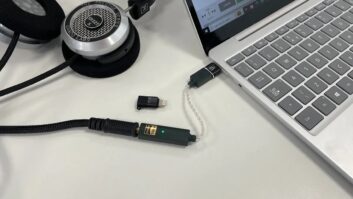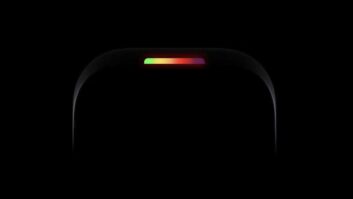Statewide bans on using handheld wireless phones while driving will be good for retailers, particularly retailers with autosound install bays, if the bans are modeled on a New York state law enacted in June, retailers and marketers told TWICE.
The New York law, the first statewide legislation of its kind, takes effect December 1. Because it prohibits drivers from talking unless they’re using a hands-free accessory, dealers expect the legislation to accelerate sales of hands-free jewelry-store-margin accessories to offset the declining profitability of wireless-phone activation. Some dealers also expect such laws to expand their potential customer base to phone users who subscribe to competing carriers.
Although no studies have shown that talking while driving increases accident rates, restrictions on driving while wireless have been proposed in about 35 states, the Cellular Telecommunications and Internet Association (CTIA) said.
Publicity about efforts nationwide to ban driving while wireless have already increased awareness and sales of hands-free options, according to RadioShack chairman Leonard Roberts and Russ Weldon, CEO of Wireless Zone, the Connecticut-based franchiser of 160 Wireless Zone stores in the Northeast.
“We’re selling a lot more accessories just because of the heightened awareness,” Weldon said. And it comes at a good time. “Double-digit phone growth has slowed, but double-digit accessories growth continues,” he said.
In a conference call to analysts, Roberts cited a “huge opportunity” even if more states don’t pass bans. “People are aware of the deaths and accidents that are occurring because people don’t have two hands on the wheel.”
To position themselves to satisfy future demand, RadioShack and carrier Verizon have said they will step up their hands-free promotion nationwide in coming months. For its part, beginning April Sprint PCS said it began to promote hands-free devices at $5 off in its stores.
Yankee Group statistics underscore the potential demand for hands-free accessories. A September 2000 survey of 3,500 wireless users found that, on average, phones were used 65 percent of the time while in a vehicle or taking mass transit. The survey also found that only 15 percent of wireless users had a hands-free accessory, although an additional 32 percent planned on purchasing such a device.
Dealers, carriers, and Yankee analyst Knox Bricken don’t expect such legislation to deter cellphone purchases or reduce cellphone usage. Said a Verizon spokeswoman, “Our customer base has established calling patterns, and we expect them to continue using their bucket of minutes.”
Although the potential for aftermarket hands-free sales is growing, carriers and manufacturers, including Mitsubishi, have already begun to cut into the business by packaging select phones with low-end hands-free earbuds, dealers and distributors said. Nonetheless, dealers said they see potential in stepping up customers to higher quality, more expensive headsets. They also see potential in stepping up customers to more expensive no-install hands-free kits integrated with battery chargers, to installed hands-free kits, and to wireless Bluetooth headsets.
Selling an installed hands-free kit, many car audio dealers said, could be almost as profitable as activating a new subscriber. So could selling a hands-free headset in conjunction with two other accessories. “You can make as many profit dollars selling three accessories at a time [as] you can on a phone,” said Wireless Zone’s Weldon.
Hands-free earbuds costing $1.50 can be sold for $10, while headsets costing $10-$20 can retail for $40 to $75, Weldon said. Installed hands-free kits costing $100-$150 can be retailed for $200-$300, plus installation. In contrast, he and other dealers said, most dealers’ handset margins, including activation commission, probably come to around only $100.
“The wireless business has shifted to not just selling to new subscribers but also to upgrading existing subscribers, with new phones subsidized by the carrier, and to selling accessories,” Weldon said. “If you’re not in the accessories business, you won’t be in the wireless business in a few years.”
Installed kits are expensive and currently aren’t big sellers, said another dealer, Larry Weingardt, a partner in Colorado’s Quality Autosound chain. “But if there’s legislation, people will buy.”
The most likely purchasers will be road warriors for whom the frequent use of headsets would be inconvenient and distracting, he said. Installing dealers could get additional business through referrals from wireless dealers who don’t do installation, he added.
Installed kits costing from $100-$110 can be retailed for more than $200, with installation bringing the total retail price to about $300, Weingardt said. In contrast, phone activations bring in just more than $100 in gross profit, which nets out to $85 to $90 after salesperson commissions. And that figure doesn’t include activation-commission charge-backs imposed by a carrier if a subscriber discontinues service within six months of activation, he noted.
Step-up earbuds purchased for $3 can be retailed for $19.95, and headsets costing $10-$11 can be retailed from $29.95, he noted.
The 42-store Al & Ed’s Autosound chain is in a prime position to sell installed kits if legislation is passed in California, said VP/GM Larry Wein. “We’re in the install business,” he said. “Years ago, we promoted hands-free, and we’re toying with the idea of doing it again.” Once a consumer uses it, he said, “they don’t want to be without it.” High prices, however, will drive most consumers to opt for the uninstalled variety, he said.
Hands-free mandates are expected to have little impact on dealers’ residual income, which is tied to a subscriber’s phone use. That’s because dealers don’t expect consumers to talk less if forced to use a hands-free accessory, and because carriers have been phasing out residual programs for many dealers. One dealer suggested that increased sales of hands-free kits that double as battery chargers could increase phone usage. Even that, however, would have minimal impact on residual income, one dealer said, because many dealers don’t get residual income until subscribers talk more than their plans’ bucket of minutes.












